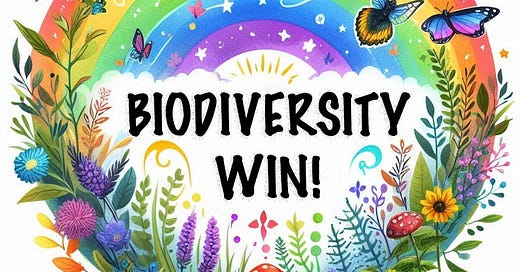Summary of Maryland’s Biodiversity and Agriculture Protection Act
a new regulatory approach for controlling invasive plant species
The Maryland Biodiversity and Agriculture Protection Act (House Bill 979/Senate Bill 915) was introduced in February. This act disposes of the state’s now-former two-tier invasive plant classification method, which had required a cost- and time-prohibitive full speculative risk assessment on each plant. With over 50 expert testimonies, mostly in favor, the act swiftly passed through the Maryland General Assembly and was signed into law by the end of May.
This act brings Maryland’s management of invasive plant species more in-line with other Mid-Atlantic states. In fact, it is following the lead of successful regulations, such as in Delaware, in adopting the NatureServe’s Invasive Species Assessment Protocol framework.
Before October 1, 2024, the Secretary of Agriculture is required to post a list of prohibited invasive species, as well as an official method of disposal for species currently planted in Maryland communities. This initial list will prioritize assessment of plants from four sources:
The former tier 1 and 2 plants.
The Maryland Invasive Species Council’s Species of Concern
The field guide Plant Invaders of Mid-Atlantic Natural Areas
Species already regulated by other Mid-Atlantic states
What is an Invasive Plant in Maryland?
An Invasive Plant Species in Maryland is a plant that did not evolve in the state and has been determined by the Secretary of Agriculture, with advice from the Secretary of Natural Resources and experts, to cause environmental, economic, ecological harm, or harm to human health.
Invasive species benefit immensely from arriving in new environments without the natural controls (e.g., herbivores, parasites, and pathogens) found in their native ranges that would help to keep them in check.
According to estimates by Crowl et al. 2008 and Pimentel et al. 2005, the annual cost of invasive species in the U.S. is $120 billion. This total includes reduced productivity and sales from agricultural and forest products; impaired use of waterways and terrestrial habitats; harm to the health of people and animals; lower property values; and costs related to monitoring, preventing, controlling, and regulating invasive species.
(source: Plant Invaders of Mid–Atlantic Natural Areas)
How are these harm levels assessed?
The Secretary of Agriculture and Invasive Plant Committee use the Invasive Plant Species Status Assessment Protocol, based on the widely-recognized NatureServe’s 2004 Protocol (“AN INVASIVE SPECIES ASSESSMENT PROTOCOL: EVALUATING NON–NATIVE PLANTS FOR THEIR IMPACT ON BIODIVERSITY. VERSION 1.”).
This protocol screens any potentially harmful plants with two primary questions:
Is this species currently established outside cultivation as a non-native (i.e., as a direct or indirect result of human activity) somewhere within the region of interest?
Is this species known or suspected to be present in conservation areas or other native species habitats somewhere within the region of interest?
If a plant species passes the yes-no screening with two 'yes' answers, it is then assigned an 'I-Rank Score' based on 20 weighted multiple-choice assessment questions, grouped into four sections addressing the major aspects of an invasive species' impact:
Ecological Impact (5 questions, 50% of I-Rank Score)
Current Distribution and Abundance (4 questions, 25% of I-Rank Score)
Trend in Distribution and Abundance (7 questions, 15% of I-Rank Score)
Management Difficulty (4 questions, 10% of I-Rank Score)
What plants are being assessed first?
I’m working on a database of all plants from the sources I listed above. At the time of writing I have 307 entries.
For each plant I am listing:
the scientific name (binomial)
common names found
habit (the plant’s general appearance or growth form)
aquatic detail, if applicable
habitat
indication of Mid-Atlantic states that regulate this plant already (or USDA)
This field should not be used to determine if a plant is invasive or not. It only confirms known regulations and is incomplete at this time.
any additional tags I use to sort the data
a link to dated changelogs for when the plant is updated
I have plants on these lists! What do I do?
The Maryland Secretary of Agriculture is required to establish a procedure for the disposal of prohibited invasive plants before October 1, 2024.
If you’re able, consider proactively replacing your plants with non-invasive or native plants. Be sure not to compost or keep the invasive plant on-site. Instead, dispose of it in a trash bag with household trash headed for a landfill. Tie the bag well!





